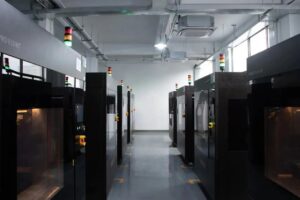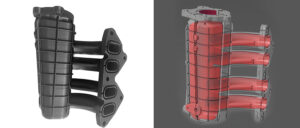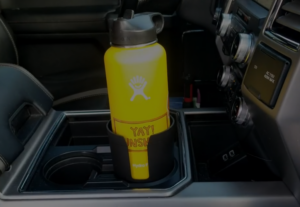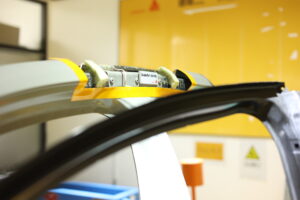It’s no secret that some of the biggest companies in the automotive industry are using additive manufacturing in both their prototyping and production efforts. In fact, along with aerospace, automotive was one of the first adopters of the technology.
The demands are high in automotive. High-performance parts require high-performance materials. In the past, these companies were limited to traditional manufacturing methods – from prototyping, to design validation and end-use components. These methods are known to be quite restrictive of both time and design freedom.
The emergence of additive manufacturing (3D Printing) has created more flexible and innovative solutions for OEMs, component manufacturers, and after-sales service providers. This solution is no longer limited to only prototyping, but the production of end-use parts.
Customized parts for special vehicles
SANKI Co., Ltd is no exception to this. Located in Ishikawa Prefecture, Japan, SANKI produces special vehicle cabs and compartment-related parts. Parts such as the custom-designed and manufactured air conditioning vents, those of which are not available in the traditional market.
SANKI first contemplated using injection molding for this project but given the limited vehicle quantity, this mass-production method was not suitable, and the cost per unit would be too high. They quickly set their sights on 3D printing through the INTAMSYS FUNMAT PRO 410 and compared the costs from injection molding. What they discovered was that injection molding would be tens of millions of yen (over USD 100,000), and 3D printing would greatly reduce those costs. Also, 3D printing could make the process more efficient, giving them more flexibility to meet design changes faster.

Here is what Mr. Ozo Mori, CEO of SANKI, had to say: “The build volume of the FUNMAT PRO 410 can reach up to 305x305x406mm. This system includes an open materials system and supports the use of water-soluble support materials that enable us to print complex parts. The built-in linear guides and the high-performance directional drive enable the FUNMAT PRO 410 to achieve high-speed, high-precision 3D printing, which ultimately helps us to greatly shorten the customized process and to effectively save costs. We plan to use the FUNMAT PRO 410 in the future to make small-batch production of parts for air conditioning and ventilation pipes specially designed for our special vehicles used in case of disaster relief and emergency rescue.”
SANKI particularly uses the FUNMAT PRO 410 to print nylon glass fiber (PA-GF) ventilation pipe parts. Compared to general engineering plastics, PA-GF has increased tensile strength, bending strength, heat deformation temperature, and material modulus. This helps to reduce thermal deformation and material shrinkage.

3D printing fixtures for testing automotive piping parts
3D printing provides fast and accurate production methods, greatly reducing the cost and time of tool production. As a result, automakers have rapidly improved their production capacity, efficiency, and quality. In the past, inspection jigs with complex shapes were produced by cutting aluminum and creating a long production time. Once 3D printing was implemented, this time was significantly shortened.
An automotive parts manufacturer, located in Kanto, Japan, with annual sales of 100 billion yen (approximately USD 1 billion), uses the INSTAMSYS FUNMAT PRO 410 to print PC-ABS testing fixtures for Canon’s auto-piping parts.
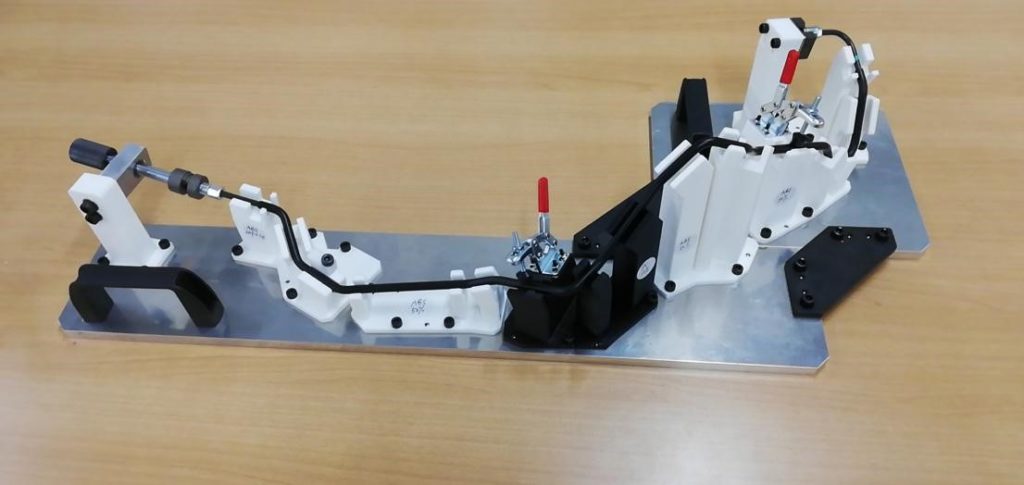
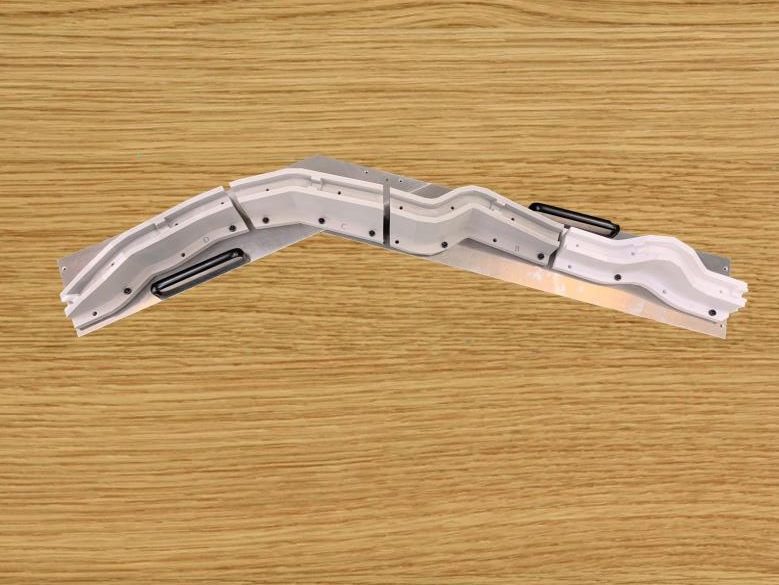
The head of the technical department commented: “After using a 3D printer to replace the original cutting process to produce consumable parts on the equipment of our factory, even if some parts are damaged, they can be immediately 3D printed and produced so that production can be quickly resumed without delay, thus greatly reducing the delivery time. The consumable parts on the factory equipment are required to have a 160 degrees heat resistance, so we use INTAMSYS’s PEEK material for printing. After printing, the parts can be used without annealing (amorphization) and are extremely robust. In addition, the company uses 3D printing for the development and trial production of the company’s production equipment.”
[/fusion_text][/fusion_builder_column][/fusion_builder_row][/fusion_builder_container]


